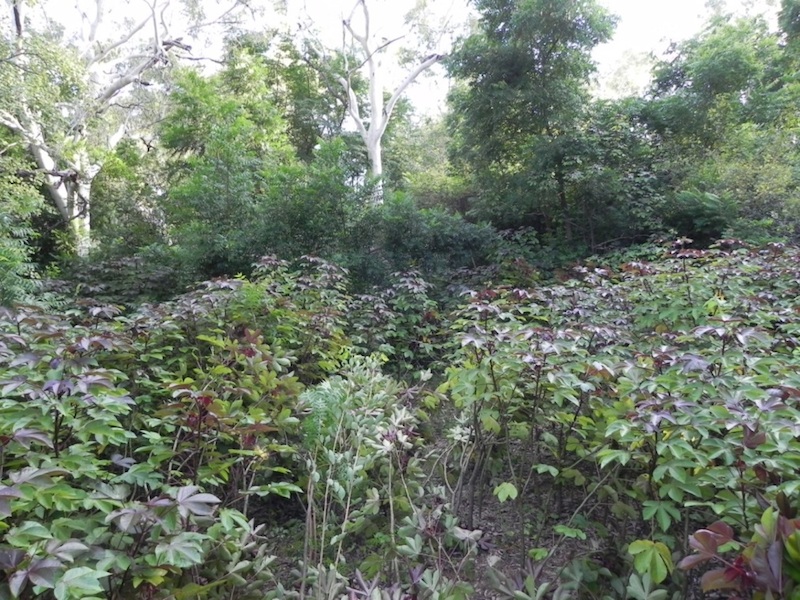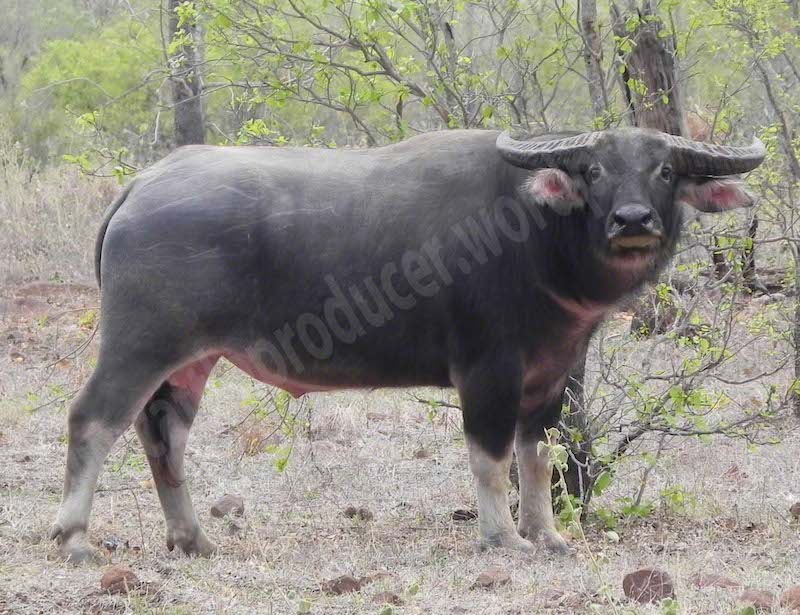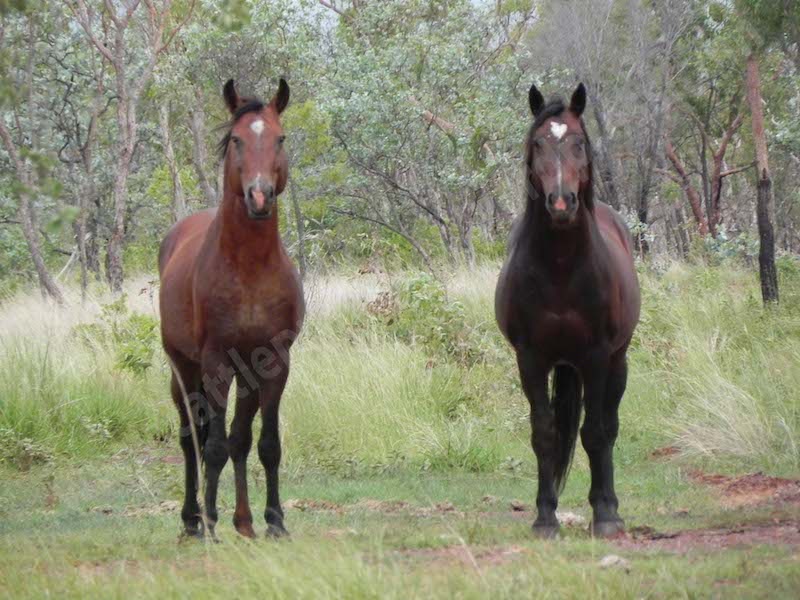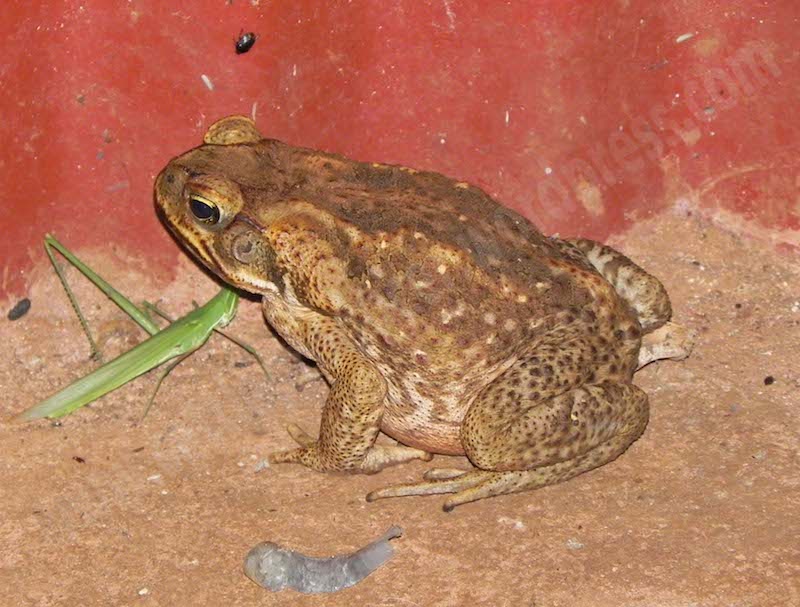The unwanted and often despised
Host: Hodgson River Station
Written by: Jo Bloomfield – Owner, Hodgson River Station.
This breed of buffalo is the swamp variety that pretty much invaded through population explosion in North Australia. Largely uncontrolled until the BTEC (Brucellosis and Tuberculosis Eradication Campaign) program in the 1980’s. They were imported to provide food to remote communities of European populations of the late 1880’s as no cattle breeds at the time could handle the conditions. Those small herds were let loose or escaped and with no natural predators and perfectly adapted to the environment – they have found their utopia.
It is such a shame these animals are so wild to handle, they are so much tougher than cattle, not requiring innoculations and treatments. They are very fertile, very tough, and don’t succumb to many dog attacks. Crocodiles may get a few as calves in the far north but in general there is nothing else that preys on them.
We get very few on our property, professional shooters may shoot one or two a year here. They can get very aggressive when cornered and we tend to give them a wide berth particularly if we are only on motorbikes. It is fairly standard that when seen they are killed.
Being a very thick boned animal it requires a high powered rifle to kill them humanely and we have seen a number come onto our property that we think people have had pot shots at and failed to finish them, they had holes in their ears that looked like neat bullet holes. Once shot at these particular animals can be very aggressive as for obvious reason they have remembered being shot and are not backwards in taking anyone on.
Apparently a very intelligent animal but highly destructive simply due to their bulk and strength. A bull can easily weigh over one tonne. Apparently they are so accurate with their horn tips that if a can is thrown at them they can accurately strike it away. I have also heard that even with their horns tipped they can relearn exactly where the end of the horn is to use to strike in a matter of days. Cattle if tipped tend to loose this awareness and will generally become more docile when dehorned as they become more protective of their heads.
Buffalo are very destructive on fences by simply barging through and taking out what ever lays in their path. They impact on natural water areas badly due to their desire to wallow like pigs, all year round.
In the far north of Australia in areas such as the Arnham land wet lands they caused massive destruction and grossly altered the floodplain areas. They are still in numbers on some properties but are also much better controlled now with markets being developed for their live export and in some cases processed at small meatworks for local consumption and export of their meat.
Many years ago their hides were in high demand to make industrial belting due to its thickness but that was largely replaced by the rubbers and synthetics of nowadays. Their meat is in high demand in other countries for consumption as it tends to be a cheaper alternative to beef.
Probably descendants of previous station horse herds in the area. These two fellas have lived in this paddock a number of years, there are no others in here, they often become quite inquisitive when we are fencing and follow us along. In other areas where brumby numbers can be a problem we do shoot them but we have let these two be as they aren’t really causing any problems as they have no females.
Donkeys are a greater problem to us simply due to numbers. We have professional shooters that come in once a year and carry out a program in which they GPS every single animal they shoot and check every animal shot is actually dead, they also give us a written report on exactly what they have shot. We may advise them to shoot pigs, donkeys, wild dogs, horses, and buffalo.
The problem with donkeys and horses is their ability to forage on a far greater area than what cattle can, they jig jog and therefore can cover distances much further than what cattle can reach. Another major issue, particularly with donkeys is when they come into water points at troughs they will kick often double barrelling with both hind feet. We often have mature cows and calves with damaged shoulders due to being kicked by donkeys, we have actually sat and watched donkeys do this to a few cattle, we have even had to put one down as her legs were damaged so badly.
We hope to catch a small donkey who has lived in a paddock on his own with cattle and bring him home to see if he will act as guardian for our weaner calves when being handled. Young cattle are their most vulnerable at this time to wild dog attacks.

If there is a underestimated ecological disaster in the making, Belly ache infestation would have to be it. A horrible plant that is incredibly resilient. One plant can throw 70,000 seeds and is incredibly resilient and can lay dormant for years before germinating reaching maturity within one wet season.
We spray and remove this where we can access, but due to the topography and dominance of this plant we are fighting a losing battle. This infestation photographed is now mainly controlled but will require years of observation to make sure it stays that way. Seeds will continually reshoot after the initial removal applications.
I have places that I have sprayed the exact same land space for five years running now as seedlings still appear from plants that were originally at maturity on the first time of control. Therefore attack on this weed requires patience and time, including a lot of money. Fortunately the local DPI weeds branch have lent me a large spray unit with 100m hose reels that I can use whenever I need but there are many places I can’t access and it concerns me greatly that this weed has already escaped the chance of being taken into control. I have flown partially along the Hodgson River system and know it is in many infestations along it and the government tell me it is in places further downstream.
Ironically imported as an ornamental plant it was even cultivated in the Darwin botanical gardens at one stage until it’s poisonous and aggressive attributes were realised, by then it was too late as people had transferred it to their gardens as it was tough and grew anywhere. From being introduced less than 100 years ago this plant has invaded most major urban sites in the NT, it has spread into some major river systems mostly in the far north of the NT and is in many areas of QLD. Ironically it is very difficult to obtain funding to control this plant and therefore has been left to the responsibility of land holders and landcare groups to try to control. Eradication of Belly ache bush has already been acknowledged by government as impossible, sadly it is simply too widespread, fast growing, and prolific.
As its name infers Belly ache causes digestion problems to animals if they consume it. Rarely do you see animals actually eat it and I assume they only would if it was absolute last resort of fodder. It’s danger is how it invades and spreads and impacts on other plants, once it forms its own dense canopy nothing else grows in the vicinity. Birds are actually the biggest nuisance in assisting Belly Ache spread as they like the coloured berries and will deposit them in sites that they happen to fly too.

A site of Belly ache following use of a dozer to clear, two years worth of spraying and still showing heavy infestation of seedlings and occasional larger bushes, photo taken April 2013 of same area as in photo number three. I had a problem with Neem trees in this area as well so decided that indiscriminate spraying of all the smaller undergrowth was really the only way I can try to get control of this plant. I call this ‘napalming’ because when you attack Belly ache bush you go in all guns blazing so as to enable easier clean up operations in following years.
Research is currently working on a beetle that will eat the plant, as yet this is still in investigation and development, but I don’t see how anything but an ecological control can halt Belly ache bush. Chemical, mechanical and physical control of it is too ad hoc and difficult to do, it is also prohibitively expensive to do properly.
This dog was caught in the act of chasing weaners and was shot. While likely a higher content pure Dingo than most we have terrible trouble with the local wild dog populations because dingos have bred so freely with domestic dogs that were owned by station people and aboriginal communities in the area. Wild dogs can look like any domestic breed and any bitsa in between. Of some we swear are crosses of pig dogs. We lose up to 10% of our calves to dogs every year and often our weaners have a high percentage of major damage to their hind quarters, deep lacerations to their bodies and often with torn or completely removed ears, sometimes both ears.
I undertake a Wild dog baiting program through the year which requires me to hold a special licence and permission to take (destroy) native wildlife, I have to keep detailed documentation of the poison I use which is 1080 and the purchase, use, and storage of the product. This is not a kind product, I have witnessed my own dog die from it when they followed me on a bike and took the baits sometime after I laid them. Due to the damage both on the animals and the financial loss wild dogs cause we must use some method to control their numbers and at the moment 1080 is the only option.
Another import that someone thought was a good idea: to eat sugar cane beetles. The fools didn’t realise cane toads can’t jump and climb and therefore are absolutely useless at eating the sugar cane beetles.
Now they have turned into a major ecological disaster. It was thought that cane toads came across the NT/QLD border about 1980, and were in Kakadu national park by 2001, with a spread of 60km per year they are expected to fairly well cover all of north Australia, the only real controlling thing is temperatures below 5 degrees will kill them. They can reach sexual maturity by 12-18 months and then will breed twice a year, females able to spawn about 35,000 eggs at at time. They can live for normally five to six years but have been recorded to live much longer.
They eat other frogs and little lizards, they kill animals that eat them through their poison secretions and just generally annoy the crap out of me digging my mulch in the vegie garden and congregating around any out door lights. Every now and then I go on a hunting expedition with bucket and gloves and pick a mob up by torch light to try to keep numbers down around the house area. They are in massive numbers in our natural water ways, Particularly ones of still water, they are just everywhere. Unless research develop some sort of disease or predator for cane toads I can’t see their impact diminishing any time soon.
Apparently some animals are learning not to eat them, for instance crows have learnt to flip them to eat them from the guts and not get poisoned and in the top end they have trained marsupials with meats to stay away from the cane toads. Those animals are then released back to the wild in an attempt to alleviate native animal population crashes.
Articles for this week will be:
1-Wild Wild Rivers – Explanation of site and formation of river systems.
2-Roller Coaster Seasons – Variances of the wet to the dry season in North Australia (today).
3-Strut your Stuff, The Animals – Native animals of the region.
4-Get tough or die, The Plants – Native plants of the region.
5-The Weird the wacky the wonderful – Oddities and incredible feats of nature.
6-The unwanted, often despised – The feral animals and weeds.
7-Monitoring sites – How producers can pro-actively record and assess their activities.




